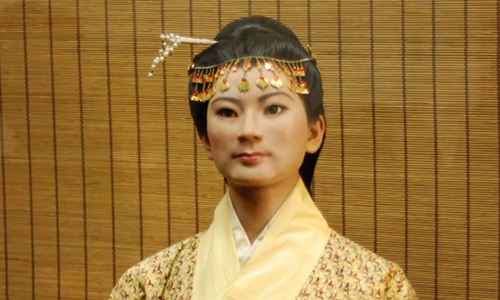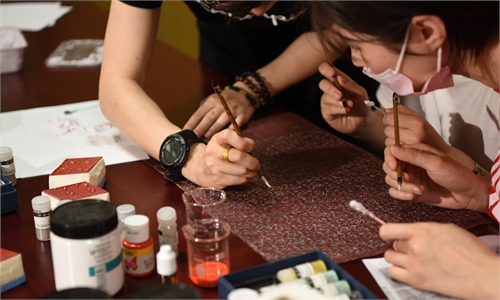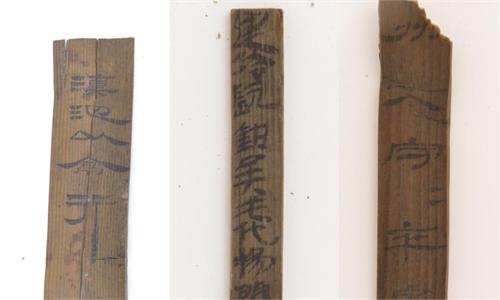ARTS / CULTURE & LEISURE
Technology unlocks Han Dynasty lifestyle at Mawangdui site for the public in reality
Living legacy
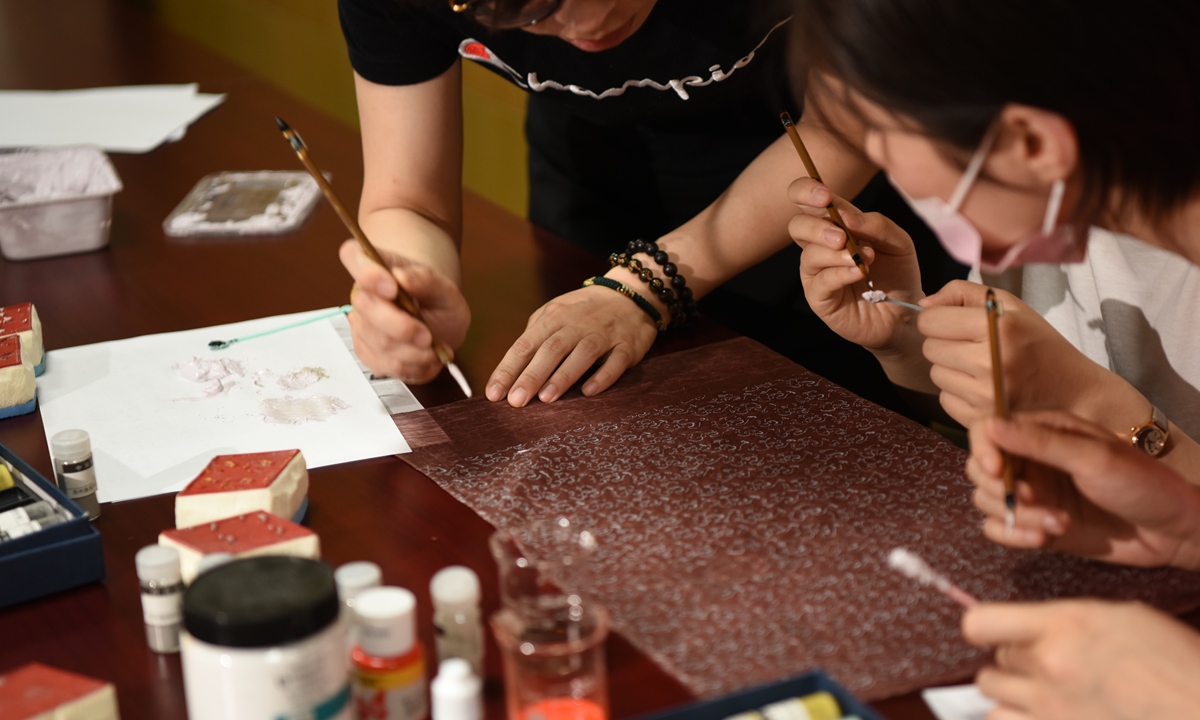
Yang Jiyuan, a restorer of ancient silk textile, and her apprentices study the details of the drawings on a Western Han Dynasty robe. Photo: Courtesy of Nanjing Yunjin Research Institute
Editor's Note:
Fifty years ago, not only the archaeological community but also ordinary people were stunned by the excavation of the Mawangdui Han Tombs. Among the findings was a remarkable discovery known as China's "Sleeping Beauty" (Lady Xin Zhui), an over 2,100-year-old lady who looks nearly as good as she did when she was buried after her death at the age of about 50, during China's Western Han Dynasty (206BC-AD25). The world has marveled at the mystery behind her body, as well as the numerous precious treasures unearthed from the tombs, including textiles, bamboo and silk manuscripts.
In this Mawangdui trilogy, the Global Times Culture Desk explores how digital technologies have brought the public closer to the heritage and how the "Mawangdui IP" was revived by the creative industries. This is the third installment.
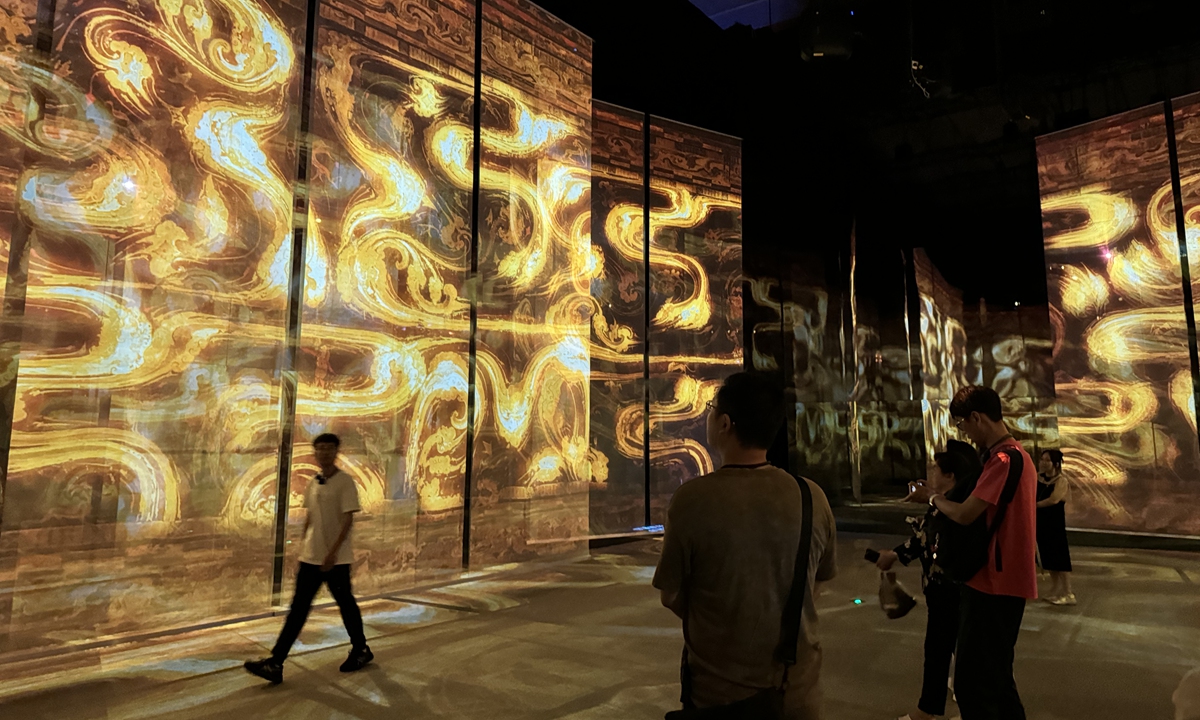
Visitors explore The Art of Life: Multimedia Exhibition of Mawangdui Han Culture in Changsha, Central China's Hunan Province. Photo: IC
Although there are many sites in China that can embody the country's Han Dynasty (206BC-AD220) history, Mawangdui is the most exceptional one mainly due to its mysterious finds like the 2,100-year-old mummified aristocrat that is known as Lady Xin Zhui.Three excavations on the site were carried out from 1972 to 1974. At that time, such excavations brought a research craze to the academic field worldwide. Thanks to new means such as the digital technology, such a scholarly craze in the past 50 years has been extended to the public, especially among the young people.
Decoding mystery
Lady Xin Zhui's silk garments are Mawangdui Han Tombs' stellar artifacts. Due to their brittle and fragile nature, many original pieces are now only stored as archives at the Hunan Museum in Changsha, Central China's Hunan Province. To connect the heritage with people, making replication for public display was a crucial task. The task engages both technological tools and the ingenuity of textile experts like Yang Jiyuan.
Yang, a restorer of ancient silk textile in Nanjing, East China's Jiangsu Province, has replicated seven Lady Xin Zhui's garments since 2016. She told the Global Times that the printed and painted floss silk-padded gauze robe was one of the most challenging tasks.
Through examination using a microscope and creating 3D modeling of the original "printed and painted gauze robe," Yang revealed to the Global Times that the piece's air-like fabric actually consists of seven sheerest silk layers, and the thickness of each one of them is like "one-third of the tissue's thickness."
Matching such almost disappearing silk textiles together was not the most challenging task. Yang told the Global Times that the "painting" process was even harder since the colors should keep looking "not too vibrant and new."
She said the gauze needs to be "1:1 the same to the original one" that has more than 2,000 years of history. Thanks to advanced technologies that can decode the ingredients and composition of ancient fabrics, Yang discovered that Lady Xin Zhui's garment was painted in natural mineral dye and was covered with an extra "glue-like substance" to make it look understated while in a good shape. She said that she was only one of the heritage protectors in China, who has "felt the responsibility to show the public a legacy's authentic aesthetics and story."
"Technological tools are our assistants. They ensure the history we deliver to the public is correct," Xiang Benshan, a restorer of underwater ceramic relics, told the Global Times.
Cross-field collaborations
Other than the research sector, technological innovations are now diversely applied on shows that relate to the Mawangdui Han Tombs.
Currently, a blockbuster show called The Art of Life: Multimedia Exhibition of Mawangdui Han Culture is ongoing at the Hunan Museum. The immersive digital project, a collaboration between the Hunan Museum, Digital Library of China, and the Harvard FAS CAMLab, presents a new model for showcasing the Mawangdui Han Tombs through multimedia installations.
The show includes three thematic sections such as "Time and Space." They highlight the artistic grandeur and spiritual reflections of ancient Chinese, giving insight into their concepts of life, death and afterlife.
Lü Chenchen, associate director of Harvard FAS CAMLab, told the Global Times that the future of Mawangdui-themed exhibitions lies in global academic collaboration and the integration of advanced technologies such as VR tools and interactive animations.
"By partnering internationally, institutions can leverage cultural IPs like the Mawangdui Han Tombs and digital tools to broaden access to historical knowledge from different perspectives and different disciplines," Lü told the Global Times.
If the research lab and the museum are where the Mawangdui IP provides intellectual inspirations to people, then the site's cross-field collaborations with the cultural and creative industries have made the heritage a joy of people's everyday lives.
The Hunan Museum recently collaborated with a food brand to launch a "Mawangdui spicy strip," one of the favorite snacks by young people that is also known as La Tiao.
At the museum's "digital Han lifestyle experiencing center," symbols of relics like the round lacquer plate and Lady Xin Zhui's garments have been printed on products like scarves, fans and cakes.
